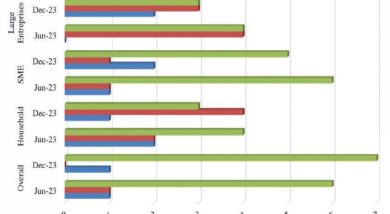Malawi’s case on manufacturing, services
 Malawi’s trade situation as put by the World Bank report titled ‘Defragmenting Africa’ is a case of both can and can’t. A situation of an economy blessed with specific advantages which are unfortunately not put to use to lure investors.
Malawi’s trade situation as put by the World Bank report titled ‘Defragmenting Africa’ is a case of both can and can’t. A situation of an economy blessed with specific advantages which are unfortunately not put to use to lure investors.
The report, released last week, touts Malawi’s comparative efficiency in manufacturing and services, but notes the country has not used the advantage to attract foreign direct investment (FDI) to match the enviable comparative return on capital.
The report places Malawi alongside South Africa, Mauritius, Lesotho, Namibia and Swaziland as top exporters of manufactured goods and services. It adds that the economies are open to trade in the region.
Arguing its case, the report says that all except Lesotho owe their exporting status to the higher productivity of their manufacturing sectors.
The World Bank report explains that economies including Malawi have both technical and allocative efficiencies—how resources are shared and put to use among industries for production.
It further points out that within a typical domestic industry, low productivity firms tend to have higher market shares in the non-exporting group than they would have in the group of successful exporters—a reflection of the, lower allocative efficiency, that characterises industry in the non-exporting group. The opposite which is a case of Malawi is true.
In the report, the World Bank appreciates the importance of business reforms in attracting FDI.
“Business environment reforms and FDI cross-country differences in the business environment have also been a major factor in recent trends in inward FDI in the region and in its allocation among member countries
“However, given cross-country patterns in expected rates of return, Tanzania, Malawi, Mozambique, Swaziland and Namibia should have attracted far more FDI than they actually did, while Angola, Democratic Republic of Congo and Zambia are unlikely to sustain current levels of FDI as these far exceed those warranted by expected rates of return,” reads the report in part.
A local trade expert, Victor Mponda-Banda, commenting on Malawi’s comparative efficiencies and inability to attract FDI argues that Malawi’s situation is obvious.
“Malawi is a labour surplus economy meaning the cost of labour is relatively competitive in the region. Further, the composition of that input is positive in that demographically we are a young nation. We have opportunities to lure serious investors to develop both the manufacturing base and the services sector.
“We need to graduate and the advantages such as low cost labour come in as one important ingredient. As an economy, we have more influence on the locational aspects in terms of FDI destination, but we need to address competitive business environment issues in relation to other destinations,” he said, in an e-mailed response to questions.
Mponda-Banda said that Malawi needs to diversify to other non-traditional items and value add its produce.
He argues that the country has a natural disadvantage because it is landlocked increasing the country’s cost of transport which is relatively high and has weight in the entire cost of production.
Last year, Malawi launched the National Export Strategy (NES) whose goal is to match long-term export and import trends. The strategy targets to raise exports as a share of imports from 51.5 percent in 2010 to 75.7 percent in 2017 and 93.4 per cent in 2022.
The NES is aimed at providing a clearly prioritised road map for building Malawi’s productive base to generate sufficient exports to match the upward pressure on Malawi’s imports.
It prioritises three export-oriented clusters for diversification: oil seeds products, sugar cane and manufacturers. It includes support plans to stakeholder efforts in other major existing clusters: tobacco, mining, tea, tourism and services.
The NES also aims to do achieve the an increase in exports through the development of the private sector in a manner that is balanced with the economic empowerment of the rural and urban poor, smallholder farmers, youths and women.
It prioritises three export-oriented clusters for diversification: oil seeds products, sugar cane and manufacturers. It includes support plans to stakeholder efforts in other major existing clusters: tobacco, mining, tea, tourism and services.




